Taking Superyacht Adventure to the Next Level with EYOS Expeditions
If you’ve ever dreamed of having a champagne breakfast on top of the mountains in the Northwest Passage or making a once-in-a-lifetime trip to Antarctica aboard a luxury superyacht, EYOS should be on your radar.
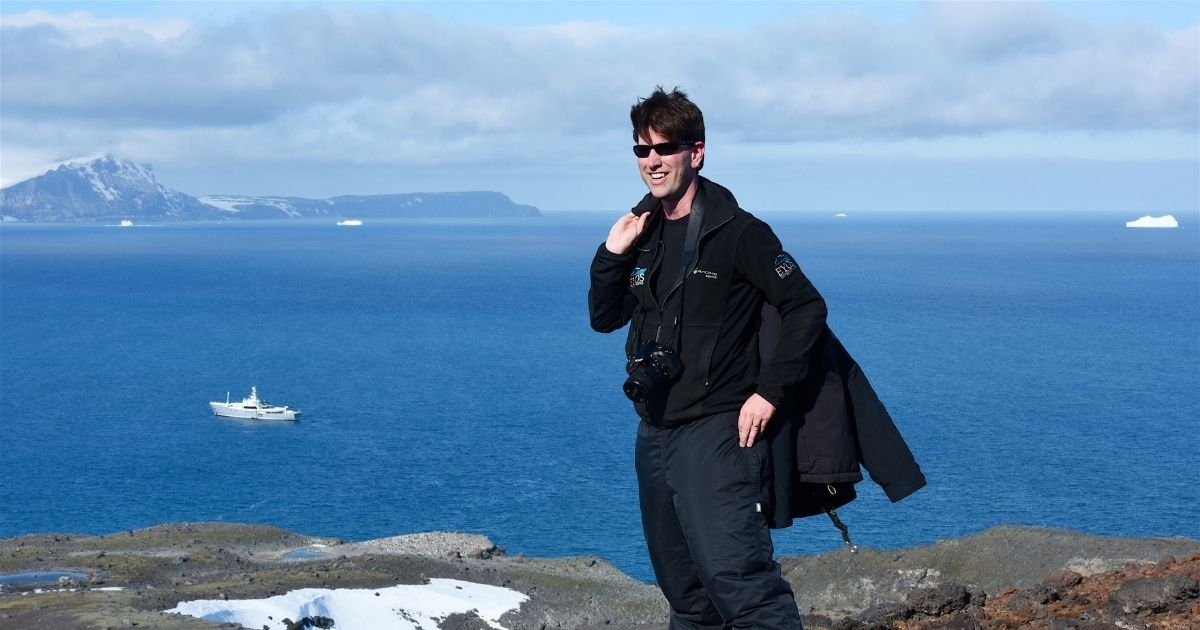
Renowned for their expertise in facilitating expeditions to the most remote regions on earth, every EYOS adventure is tailormade with the help of a network of travel and marine specialists, and no request is too big.
Since his first expedition to the Galapagos in 2005, CEO Ben Lyons has been hooked. Superyacht Stories spoke to Ben to discuss what goes in to planning a trip, what guests can expect from an EYOS expedition and, of course, a few of his most memorable experiences so far.
You’ve had an exciting and varied career – can you tell us a little about your background?
I have been fascinated with ships since I was very young—and initially I worked on very large passenger ships (including as Chief Officer onboard Queen Mary 2). However, I took my first expedition in 2005 to Galapagos and the use of the ship as a platform for education and discovery resonated with me. I knew I wanted to get to Antarctica, and my first trip there was in 2007. When I quit my job on QM2 to join a small commercial expedition ship (for Lindblad Expeditions/National Geographic) people thought I was crazy, but it was one of the best decisions I’ve made. I worked on expedition ships in Antarctica and the Arctic for several years before going back to school to get my MBA. EYOS was already started by Tim and Rob then, and when I graduated, I went to work full time for EYOS. (I had known Tim from our working together in Antarctica and the Arctic for Lindblad.)
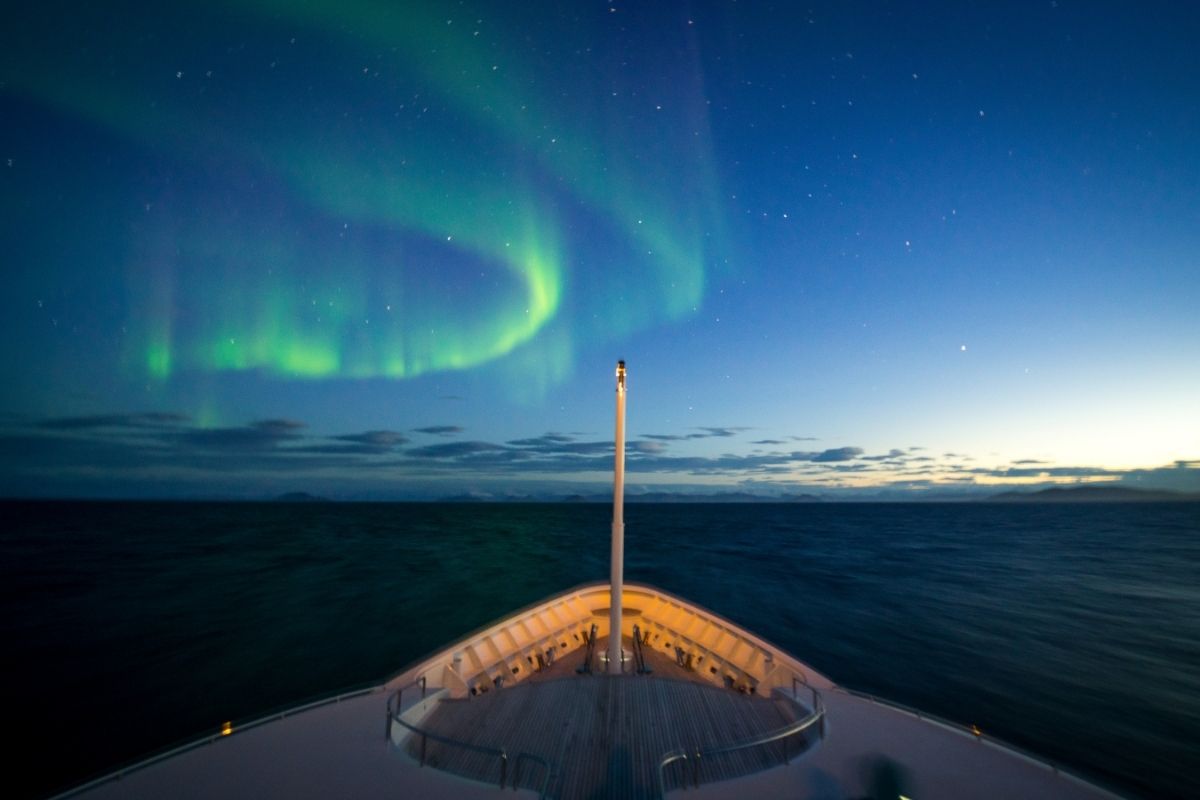
©JustinHofman
How did you first get involved with the superyacht industry?
As above—I had worked with Tim in Antarctica and the Arctic since 2007. Tim is one of the founding partners of EYOS and when I graduated with my MBA, he asked if I wanted to join EYOS.
What is the scope of your business and the services you provide?
We try to be a one stop shop that can handle all elements of expedition preparation, management and oversight. We do everything from planning the itinerary and applying for permits to coordinating logistics on shore and in the air. On the yacht, we provide a team to manage the actual execution of the expedition—these range from ice pilots to expedition guides to polar divers to ski guides. The idea is to offer support to the captain and crew while curating remarkable experiences for the owner or charterer.
We also provide services outside of the superyacht industry, working on logistics for media and film as well as scientific groups and conservation organizations. We have also worked with Damen shipyards as design partners on the SeaXplorer range and regularly advise owners on how to make a yacht suitable for expeditions and remote coast sailing. We have a very diverse team made up of expedition captains and guides with a variety of backgrounds and expertise. Perhaps the greatest thing about working for EYOS is that no two days are ever the same!
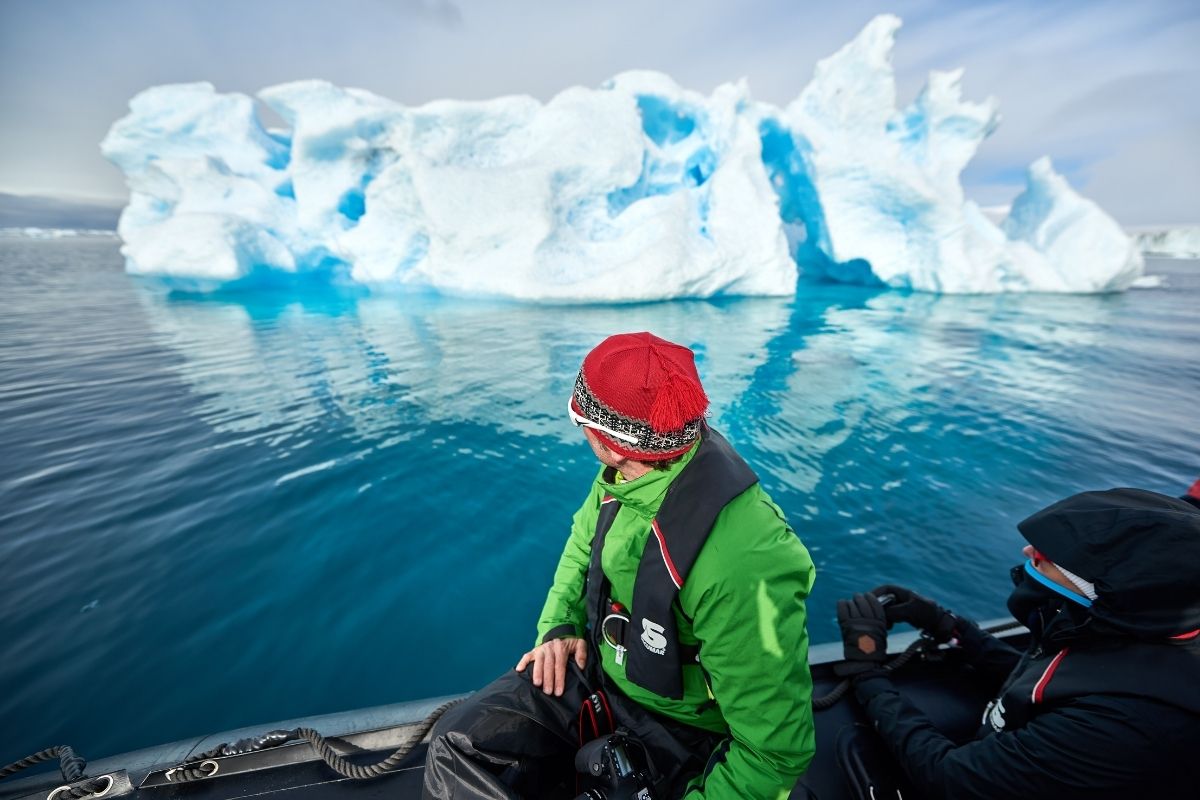
©ReeveJolliffe/EYOS
Can you talk us through some examples of the different types of experience you can offer?
We like to think that if the client can dream it, we are usually able to find ways to make it happen (assuming there is enough lead time!). At the most basic level, the experiences are leading guess to remote regions and looking after their safety. That can involve anything from taking them out kayaking or on hikes ashore, or cruising the coast on small Zodiacs looking for wildlife.
Of course, activities can be much more complicated though. It might involve hiring ski guides that are true mountain experts, familiar with polar environments where crevasses are frequent. Or, we just had a group of clients who learned how to scuba dive in cold weather with us. In the year before their trip, we conducted training in Switzerland in the winter and in Iceland before finally taking them to Antarctica for their dive expedition.
We have put guests on top of mountains in the Northwest Passage with helicopters for a champagne breakfast, and set a world record (twice!) for furthest south that any vessel has ever gone in history. And lastly, we recently completed a year-long expedition taking a client to the deepest point in each of the five oceans - something that had never been done before - and then the following year, ran follow up expeditions where, for the first time ever, commercial clients have the opportunity to dive over 10,000 metres deep to Challenger Deep.
What is the most requested expedition by EYOS’ clients?
Antarctica is probably the one that captures most people’s imagination and where a lot of people associate with EYOS. But once they visit Antarctica, and understand the appeal of expedition travel, they reach out wanting to go somewhere else equally remote or inspiring. So we see a constant level of interest in the Arctic and the Northwest Passage, and Alaska is very popular this year in particular, and for tropical regions, we have a strong connection with Papua New Guinea and Melanesia. In fact, our founder, Rob, lived there for 12 years, and we have a dedicated team living in the region for local support.
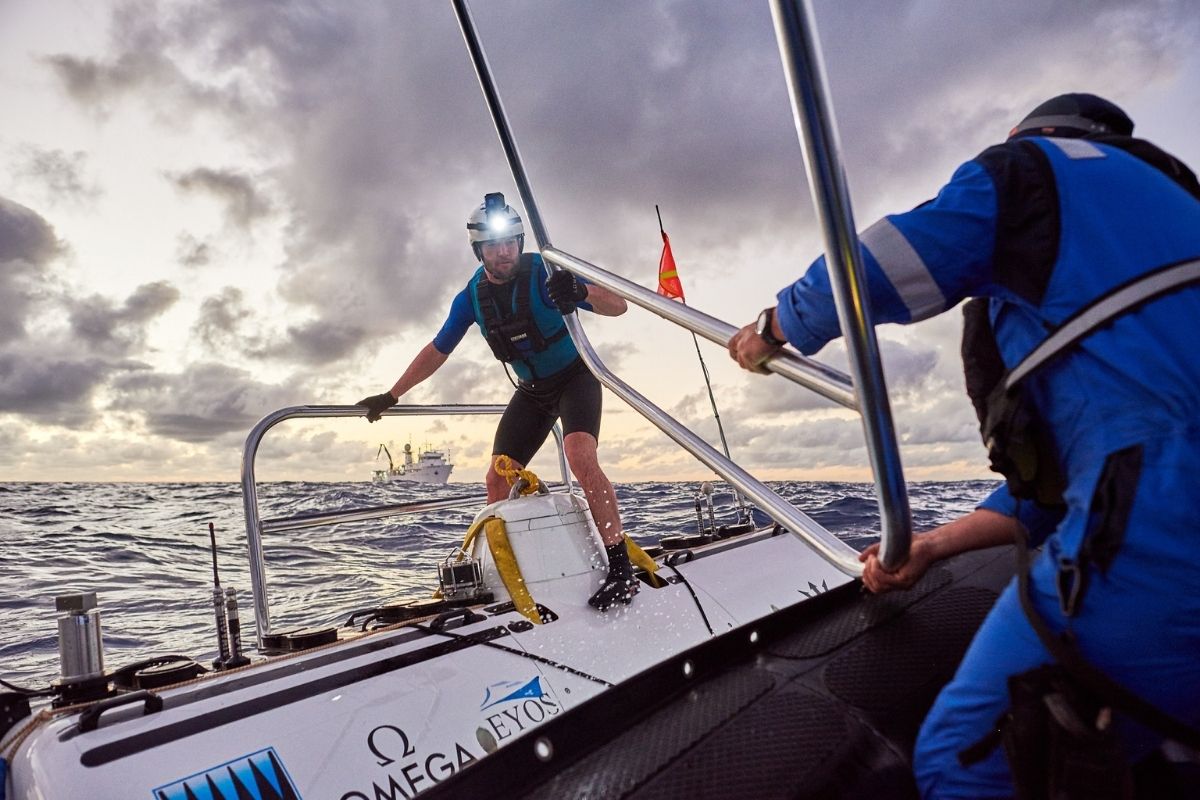
©ReeveJolliffe
How does an explorer yacht differ from a more typical charter yacht?
There are many things that distinguish an expedition yacht from the more typical white boats that you find in the Caribbean or Mediterranean. What did the designers consider in the initial design-- did they consider the vessel’s capability in ice? What is the strengthening and the framing in the hull like? What kind of toys does it have and can the crew deploy those toys quickly in a variety of weather conditions?
At the same time we're looking at endurance of the yacht. How long is the vessel actually able to stay away from port and infrastructure? That's one of the biggest considerations that we find people often don’t consider. Overall, it really relates to the yacht’s ability to operate independently for extended periods of time in a variety of weather conditions, while allowing for a connection between the environment and the client.
Who is your typical clientele and what draws them to an EYOS expedition?
Our clients are keen to learn and understand the world and have truly unique experiences in the most remote regions on earth. They want to be able to explore and have experiences on their own schedule, and witness some of the most fantastic wildlife on earth. They value expertise and safety. Enrichment and understanding and being led by top experts and guides in their field is an integral part of what we do and it's what our clients crave.
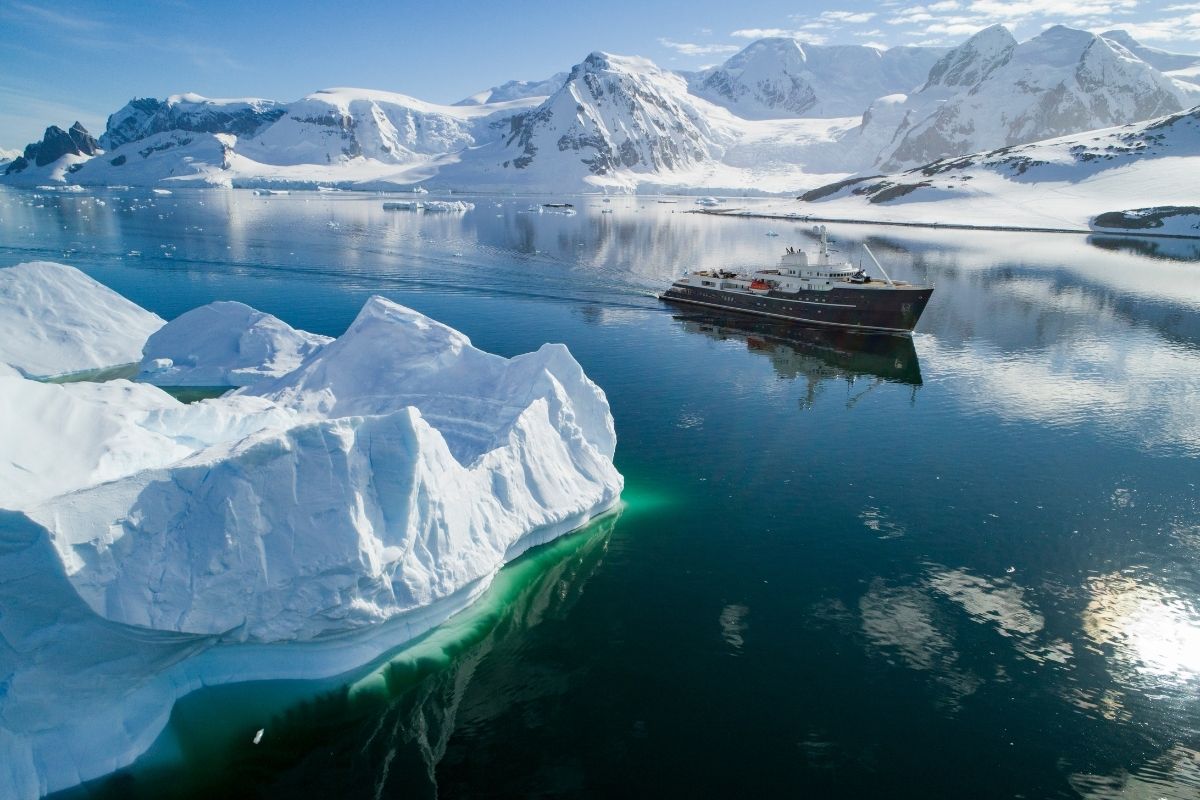
©JustinHofman
Increasingly we find clients are more and more committed to giving back and participating in scientific missions. We’ve hosted several seminars - for lack of a better word - where we’ve brought in experts from around the world to lead discussions about climate change, the Antarctic Treaty or wildlife conservation. We are fortunate in that many of our clients have taken an active lead in ocean conservation, mapping and discovery.
Increasingly people are looking for immersive experiences over more traditional vacations – how are people impacted by an expedition, what do you notice and what feedback do you get?
It is incredible to see the impact that going to these wild and remote regions can have on clients. They are having experiences far removed from their ordinary lives. It is no longer about the best restaurant or show, but encounters with Orcas, and it leaves people exhilarated. For many it becomes a reset of sorts, living without their cell phone, focused more on nature and wildlife. I think it reminds them of what is important in the world, and you can literally see them change over the course of the week. And without a doubt, no place changes people more than Antarctica. I can’t tell you how many times I’ve had people come back afterwards and say: “I just feel like a different person now.”
Is an expedition on a superyacht a once in a lifetime thing or do clients get hooked and want more?
While everything is personal, we absolutely find people coming back time and time again. One of our clients had even been to Antarctica eight times! In fact, repeating a trip with us is much more the norm. Often, they jump around the world, trying new destinations. For instance, they might first be drawn to Antarctica, but once they realize how much they love expedition travel, they are keen to visit the Arctic the next year. After that, they realize there is more they missed in Antarctica, so they might head to South Georgia, or go all the way to the South Pole. By then, they’ve heard our team talk about Papua New Guinea enough that it becomes next on their list. So expedition yachting is absolutely something that people get hooked on. They have had a meaningful and exhilarating experience—certainly they want to replicate that in the future.
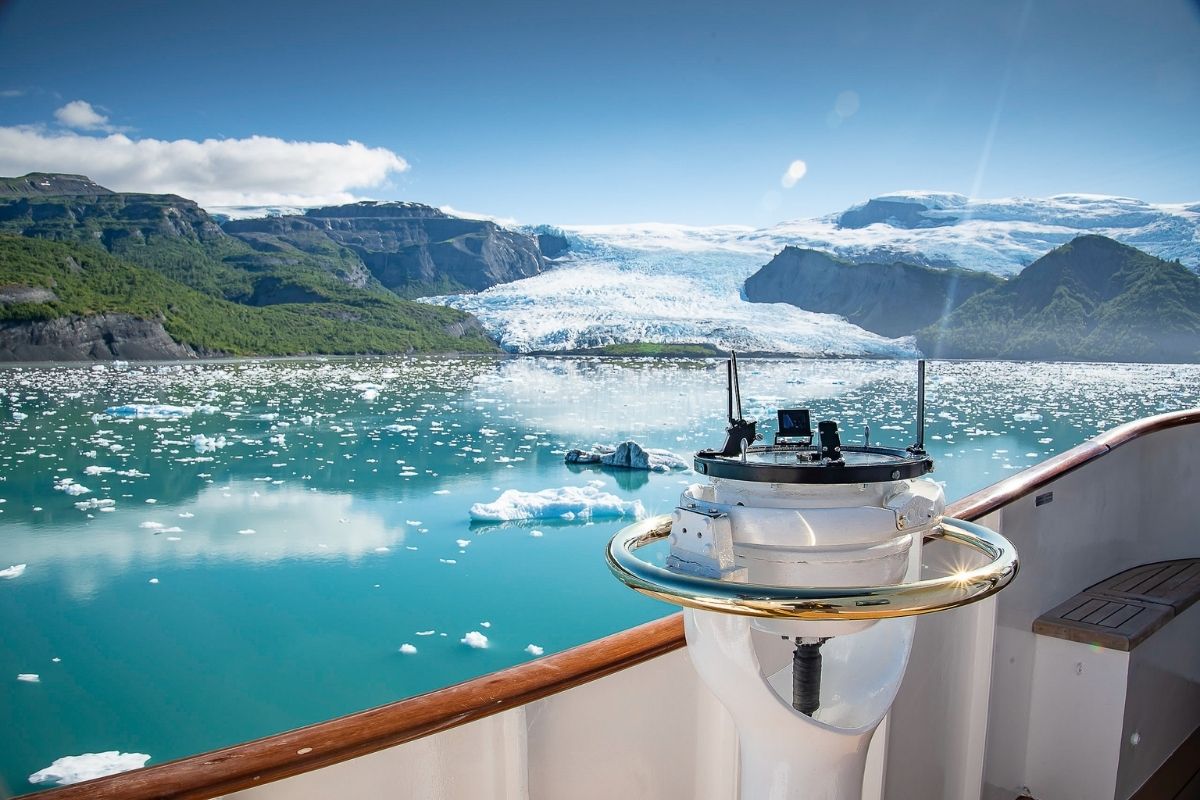
©KenBurton
Do most clients have previous experience of expeditions on different types of vessel, on photography or research trips, or is that a totally different market?
I would say that's basically a totally different market. Generally, clients are coming to us either from the traditional yachting market, but wanting to see something new and different, or they are coming to us from completely outside yachting and are brand new to expedition travel.
How do you work alongside the yacht’s captain and crew?
Cooperation and teamwork are hallmarks of working on an expedition yacht. The expedition guide and captain in particular share a unique relationship that is not ordinarily found in the shipping industry. (It is not common on vessels to find people other than the captain making suggestions on where to go!). Therefore our team need to be able to work with the captains and crew to best achieve the results. We are there as a resource for the crew, providing him or her with support and information they need while allowing them to focus on the safe running of the ship in unfamiliar waters. Since we often take care of the guest activities as well, it provides a bit more support to the crew.
What considerations do you need to take into account when visiting extreme environments such as Antarctica, what are some of the challenges?
There can never be enough planning or preparation. We always visit a polar bound yacht before working with them and run through a checklist of items. There are a lot of different challenges to consider, everything from weather and ice and how that might affect this yacht in particular, to more technical considerations such as water making capacity in a cold water environment.
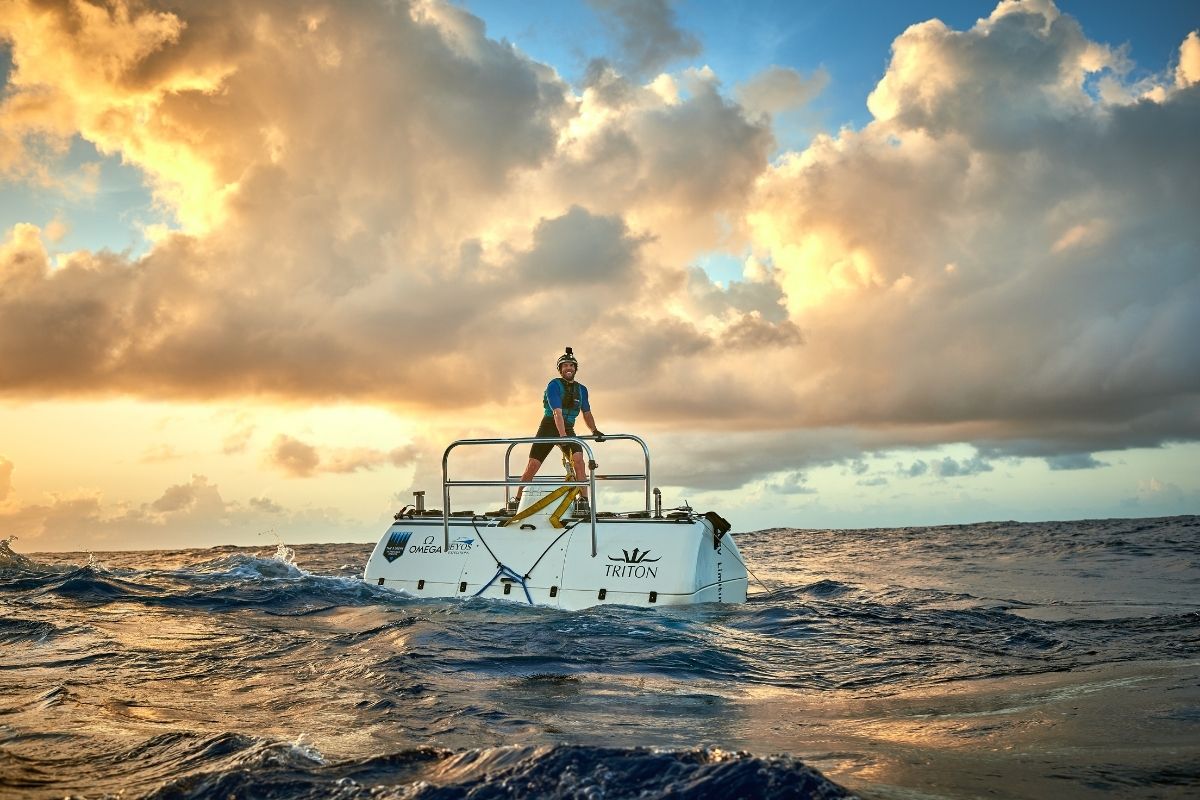
©ReeveJolliffe
We try to ensure the crew is as well prepared as possible while better understanding the yacht’s physical capabilities and weaknesses. We never want to get the yacht or the crew outside their capabilities. We can take them out of their ordinary comfort zone—but not outside of their capabilities. So having the right team of experts as well to back up and support the crew is paramount. That is the single best piece of preparation that can be done.
How many EYOS personnel would typically be on board for an expedition and what’s their particular expertise?
It all depends on what the client is asking for, how familiar the yacht is with the destination and what the client is asking for. Anytime we're going to the polar regions we will always have an expedition guide and an ice pilot. Safety, wildlife management and compliance with local regulations takes up a large part of our job there. But on more complex expeditions, we have had teams of over seven people - just last season on a trip I was on as ice pilot we had an expedition leader, a historian, an expert in climate change, two world class ski guides and an expedition coordinator! But in Papua New Guinea, the needs are very different. We’ll likely have a cultural specialist, and perhaps only one person on the team.
How do you ensure all your expeditions are safe?
We are very fortunate in that our team has collectively participated in well over 1,200 expeditions, so we have a lot of experience in managing these kind of trips. And in these regions, experience matters. But significantly, we don't get complacent. We are constantly sending our team and our staff out for training and for interaction with the expedition community as a whole to stay up-to-date on best practices. Of course we are also for members of IAATO and AECO, so we are sure to be following best industry practices.
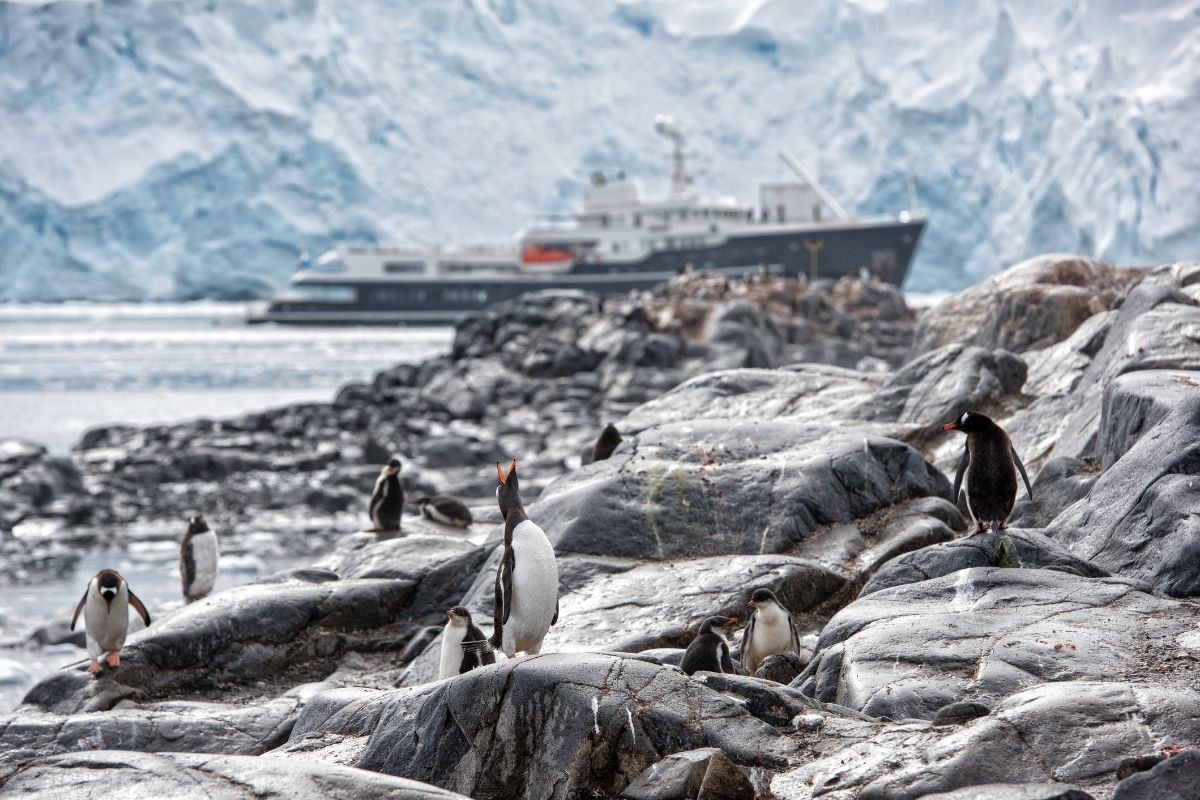
©ChristopherSholey
At the same time, we take precautions in advance of an expedition. An example is the visit we do to a yacht months and months before it will head to a polar region that we mentioned before. Also, there is a mindset from working with our type of clients—we have to know and understand what they want, and what will excite them, and deliver what they are expecting, but also not get carried away. They hire and trust us because we know responsible limits.
The prospect of visiting some of these places is hugely exciting but not everything is under your control, so how do you manage people’s expectations?
You're absolutely right, but I think that's part of what sells an expedition. It is the fact that not everything is predictable and not everything can be controlled that keeps expeditions exciting. Often the best experiences are the opportunistic ones where we take advantage of a moment to deviate from our plans. This can be a remarkable encounter with a whale, or simply lingering with a colony of penguins to watch a beautiful setting sun, late into the evening. Or, it might be an impromptu game of soccer in a village in Papua New Guinea with the locals.
We ask that all our clients come in with an understanding that our trips are not scripted, and that flexibility is key. And if they embrace that attitude and understand why that actually benefits them and why they will have a better experience because of it—well, we find they end up loving the experience.
We also try hard not to over market or overhype. If you are unrealistic in the promises you make to your clients, it puts pressure on you as a guide, and leads to disappointment in the client. We know the experiences we offer are exceptional; clients have trust in our experience and reputation to deliver for them.
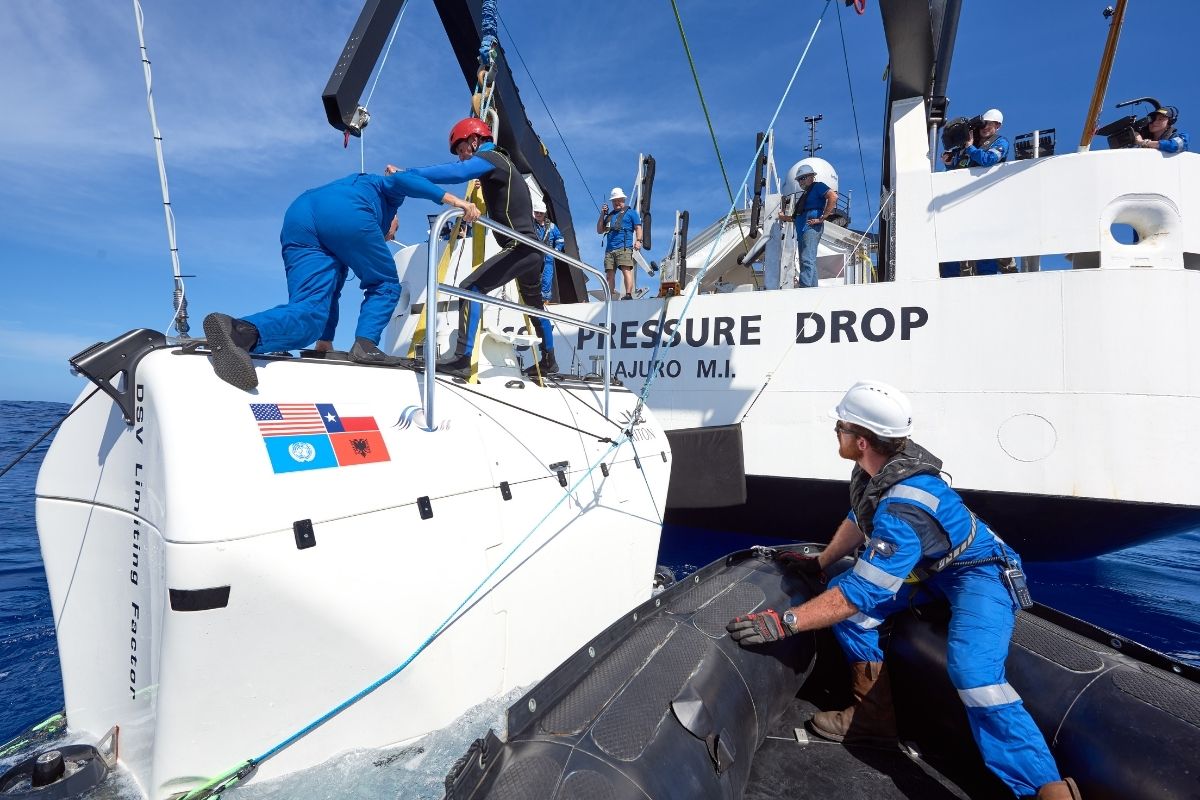
©ReeveJolliffe
What is your most memorable adventure so far?
That’s a tough one. I think for me the best experience I’ve had was getting to spend two full days absolutely surrounded by ice in Antarctica last year. We had 9/10 pack ice and I was on a yacht that was able to plow through the ice. We kept going further and further south and then finally stopped just about the same time as an extraordinary sunset was finishing. It lit up the entire sky, it lit up the ice around us—it was magic.
The next day was beautiful, warm and sunny. The guests were just so happy; they wanted to just sit on the yacht and take in this amazing surrounding. We put the helicopter up for scenic flights and had the most amazing New Year’s. That evening, we sailed out passing incredible castle shaped icebergs with the moon rising behind it. So those 48 hours stand out. But it is hard to say; I have memories of being surrounded by whales for hours, or polar bears literally coming right up to the vessel, that is hard to pick just one experience.
What’s the most unexpected thing to have happened on a trip?
I don’t think I’ll answer what’s the most unexpected thing that has happened to me, but rather address what I see as the most unexpected things that happen to guests. And it isn’t necessarily the wildlife experience—but rather how the wildlife and these areas affect them. I've seen families that were extremely worried about conflicts and getting along together on the yacht, but they ended up spending two weeks together and having the best time of their lives, bonding and laughing and experiencing together.
I've seen executives who are used to clutching their phone 24 hours a day releasing that grip on the modern world. Perhaps that sounds crazy, but it is incredibly powerful to watch happen.
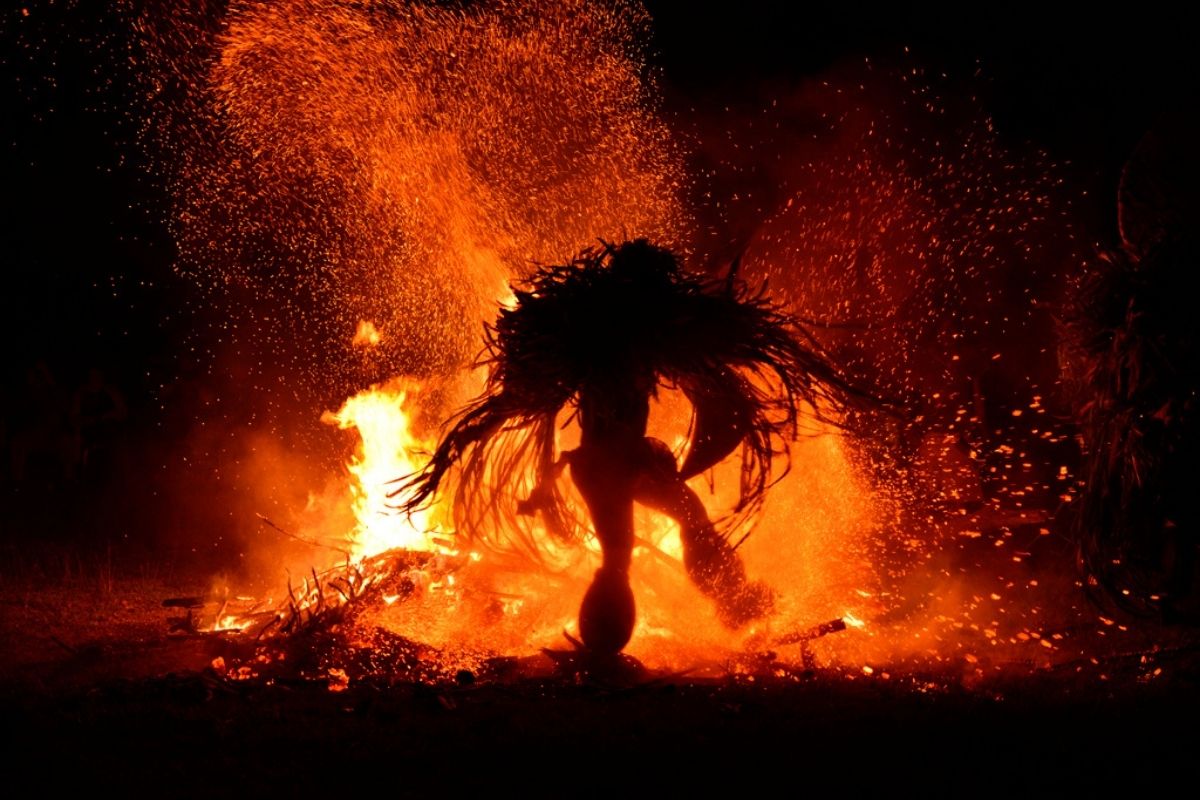
How does EYOS support or promote ocean conservation?
Ocean conservation and support of science are integral tenants of what EYOS is. All of us have joined the company because we are passionate about what we do and the areas we travel to, and our team sits on the executive boards of both IAATO and AECO, helping to shape the very guidelines that all operators work under.
Specifically, though, we have supported conservation organisations that we have long standing relationships with. For some of them, we have had yachts donated to them for specific missions, or invited certain organizations onboard different charters. Through these introductions and relationships several million dollars have been raised as a direct result of our actions. We are also founding partners of Yachts for Science, an incredible organisation dedicated to matching scientists and their research projects with yachts that are available to assist and support them.
At the same time we're actually organising and leading science and conservation expeditions—including the Five Deeps and Ring of Fire Expeditions over the last 18 months. We’ve taken Prince Albert to the bottom of the Mediterranean, showing him the plastic that is found on the seafloor, and mapped over 1 million square kilometers of the ocean. We’ve helped discover dozens- literally- of new species, and worked with organizations such as BBC on new film productions. It may be a behind the scenes role, but it is all contributing to awareness and appreciation of the ocean.
What do you predict to be the next big thing in expedition yachting?
Absolutely there is going to be more and more cooperation with conservation organizations and science. In the last few there has been a real sea change in what people are expecting and wanting to do, and how they can support science along the way. That is inevitably going to grow.
What is in the pipeline for EYOS in 2021 (and beyond)?
2020 provided us a chance to focus on new areas of the business, and we are lucky to have some new partnerships and opportunities for the coming years. The first of these we have just announced-- a long term alliance with Nansen Polar Expeditions—and more details will be released in May. We will be running more dives to Challenger Deep for commercial clients, and we are looking forward to really expanding the operations of Yachts for Science. For European clients not able to travel as far afield, we plan to ‘expeditionise’ the Mediterranean this summer - combining conventional Med trips and charters with a submersible that would allow clients to partake in science initiatives, visit historic wrecks or just explore more broadly below the surface.
And finally, where’s next on your personal bucket list?
While I’ve sailed around the western half of the Northeast Passage on top of Russia I want to go all the way across. It just seems natural after having done the Northwest Passage to want to do the Northeast passage-- and we look forward to a yacht doing it in the not too distant future!
Images: Supplied by EYOS
Read Next
Jimmy Carroll On Creating Out Of This World Experiences With Pelorus Yacht Expeditions
Discover Tiktopia: Inside A Remote Civilisation
Passage To Antarctica
